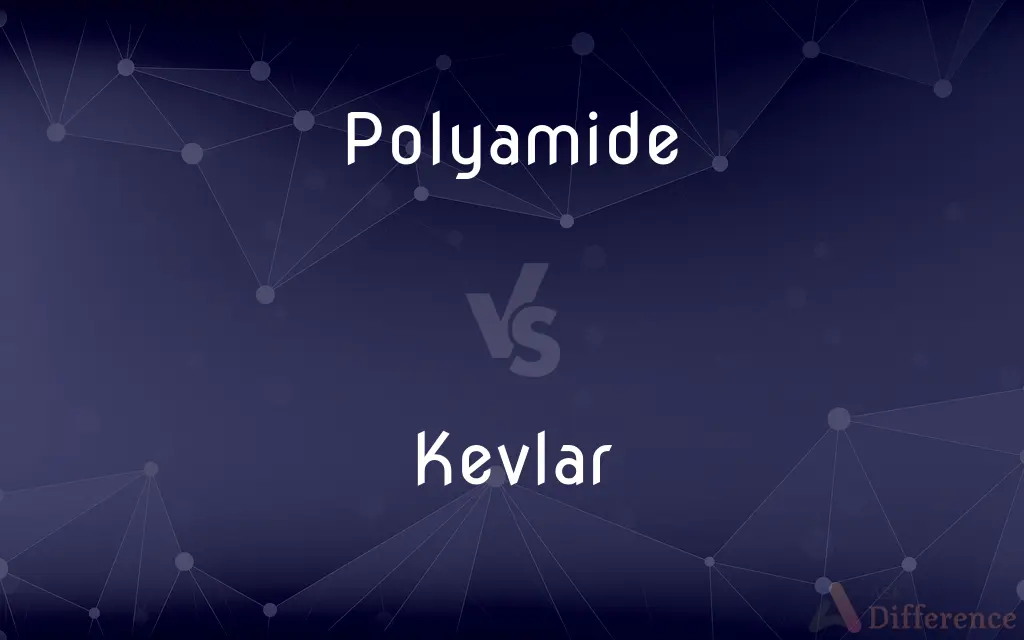Polyamide vs. Kevlar — What's the Difference?

Difference Between Polyamide and Kevlar
ADVERTISEMENT
Compare with Definitions
Polyamide
A polyamide is a polymer with repeating units linked by amide bonds.Polyamides occur both naturally and artificially. Examples of naturally occurring polyamides are proteins, such as wool and silk.
Kevlar
Kevlar (para-aramid) is a heat-resistant and strong synthetic fiber, related to other aramids such as Nomex and Technora. Developed by Stephanie Kwolek at DuPont in 1965, the high-strength material was first used commercially in the early 1970s as a replacement for steel in racing tires.
Polyamide
A synthetic polymer of a type made by the linkage of an amino group of one molecule and a carboxylic acid group of another, including many synthetic fibres such as nylon.
Kevlar
(uncountable) (Fabric, cordage, etc made of) aramid fiber, an exceptionally strong, light, man-made fibre used to strengthen cables and sheet materials, e.g. in stab-resistant vests.
Polyamide
A polymer containing repeated amide groups, as in various kinds of nylon.
ADVERTISEMENT
Kevlar
A piece of personal protective equipment made from Kevlar, such as a helmet or a vest.
Polyamide
(chemistry) Any of a range of polymers containing amide (or peptide) repeat units; examples include proteins and nylon.
Polyamide
A polymer containing repeated amide groups
Share Your Discovery

Previous Comparison
Recorder vs. Bassoon
Next Comparison
Jazzy vs. Jazz














































